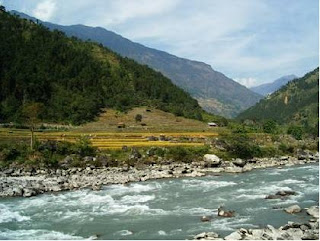NEWS RELEASE
WASHINGTON, Dec. 15, 2009 – The Air Transport Association of America, Inc. (ATA), the industry trade organization for the leading U.S. airlines, announced today that a core group of airlines has signed groundbreaking memoranda of understanding (MOUs) with two different producers – AltAir Fuels LLC and Rentech, Inc. – for a future supply of alternative aviation fuel.
Twelve airlines from the United States, Canada, Germany and Mexico – Air Canada, American Airlines, Atlas Air, Delta Air Lines, FedEx Express, JetBlue Airways, Lufthansa German Airlines, Mexicana Airlines, Polar Air Cargo, United Airlines, UPS Airlines and US Airways – have signed MOUs with both producers. In addition, Seattle-based Alaska Airlines and Honolulu-based Hawaiian Airlines signed the MOU with AltAir Fuels, and Orlando-based AirTran Airways signed the MOU with Rentech.
These alternative fuels will be more environmentally friendly, on a life cycle basis, than today’s jet fuels. This domestically produced fuel will create jobs and bolster U.S. energy independence.
“Today’s announcement reinforces the proactive steps that airlines are taking to stimulate competition in the aviation fuel supply chain, contribute to the creation of green jobs, and promote energy security through economically viable alternatives that also demonstrate environmental benefits,” said Glenn Tilton, ATA board chairman and UAL Corporation and United Airlines chairman, president and CEO. Tilton also noted that discussions with a number of additional alternative-fuel producers about other projects are underway, as are discussions with the U.S. military regarding other cooperative opportunities.
“Our intention as an airline industry is to continue to do our part by supporting the use of alternative fuels. We urge the U.S. government and the investment community also to do their part to further support this critical energy opportunity,” said Tilton.
Federal Aviation Administration Administrator Randy Babbitt said, “Today’s announcements reaffirm the airlines’ commitment to a greener, more stable and secure energy future, reinforcing the spirit of innovation and openness that is the essence of the Commercial Aviation Alternative Fuels Initiative.”
AltAir Fuels Founder and CEO Tom Todaro said, “The airlines’ pledge to use renewable jet fuel sends a clear and unmistakable message to policymakers, investors and industry leaders that AltAir Fuels has entered a new era of more sustainable aviation.”
D. Hunt Ramsbottom, Rentech president and CEO, said, “This agreement is a significant step forward, establishing a framework for a large group of diverse carriers to negotiate a definitive fuel purchase agreement.”
The AltAir Fuels project contemplates the production of approximately 75 million gallons per year of jet fuel and diesel fuel derived from camelina oils or comparable feedstock, refined at a new AltAir Fuels plant to be located at the Tesoro refinery in Anacortes, Wash. The Rentech project in Adams County, Miss., contemplates the production of approximately 250 million gallons per year of synthetic jet fuel derived principally from coal or petroleum coke, with the resultant carbon dioxide sequestered and the carbon footprint potentially further reduced by integrating biomass as a feedstock.
ATA airline members and their affiliates transport more than 90 percent of all U.S. airline passenger and cargo traffic. For additional industry information, visit
www.airlines.org.
Read at-Source:















